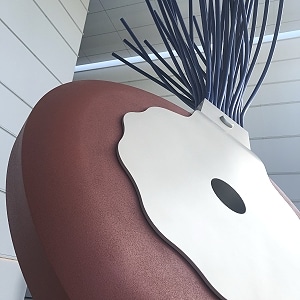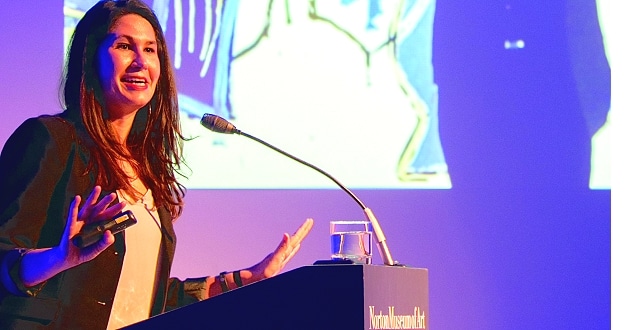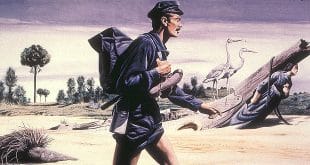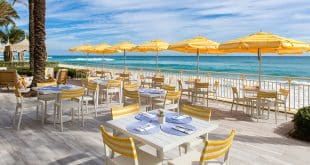Located in West Palm Beach, the Norton Museum of Art has one of the most important art collections in the southeast and has just completing a $100 million expansion project that will add more galleries, gardens and classroom space. J. Rachel Gustafson tells us about some of her favorite exhibits as well as what we can expect after the re-opening of the museum on February 9th.
Frankee Cuzzola: Please tell our readers a little about yourself.
J. Rachel Gustafson: I am an assistant curator at the Norton Museum of Art and have worked for this institution for the last four years. Before coming here, I studied modern and contemporary art within American University’s art history program in Washington, D.C. While I was in the capital, I was fortunate enough to also work for the National Museum for Women in the Arts and the National Endowment for the Arts. Curating was not my first career, however. I was a social media and PR director at a political and public affairs communications firm in Tallahassee for about five years – then I went back to school.
The re-opening of the museum on February 9th has been much anticipated, what can our readers look forward to?
To begin, the additional gallery space means more art from our collection and other significant loaned works of art will be on view than ever before. For the last two years we have produced thoughtful exhibitions and installations with the space allotted but now, thanks to the elegant and spacious galleries designed by Norman Foster, viewers will be able to see the works on view in a whole new way. I am particularly excited to see the Harris Colonnade – a gallery with a full wall of glass windows that will house large contemporary sculpture.
How did your relationship begin with the Norton Museum of Art?
I first started coming to the Norton when I came home over breaks from my undergraduate studies at Florida State University. I came again right before I started graduate school and vividly remember seeing the first RAW – Recognition of Art By Women – exhibition that surveyed the work of British artist Jenny Saville. Her work is monumental and emotive and the perfect send-off before studying art history full time. After I graduated, an entry level position was available under the mentorship of the Director of Curatorial Affairs, Cheryl Brutvan. It’s been onwards and upwards ever since – and I very fortunate and grateful for the way my career began at this museum.
How does the museum procure art?
The word museums use is acquire. Objects become part of the collection through gifts from generous donors or through purchases that are selected and vetted by senior curators. From time to time, the Museum features special exhibitions that highlight recent acquisitions.

I could likely pick out favorite elements in every exhibition I work on. Because my role at the Norton supports all five departments, the exhibitions I contribute to vary and makes that question challenging. Exhibitions that I think can be most revealing to visitors are those that tell a history that was perhaps previously unknown or unrecognized – Pen to Paper: Artists’ Handwritten Letters from the Smithsonian’s Archive of American Art, Miss Lucy’s Three-Day Dollhouse Party, and Women Modernists in New York all come to mind. Similarly, exhibitions that show works that have been rarely seen can also be fascinating. Oldenburg and Van Bruggen: The Typewriter Eraser (pictured at right), A Favored Form is the exhibition I am currently working on and will be on view when the Norton re-opens on February 9th after a transformative expansion project – it will feature more than a dozen drawings directly from the artists’ studio and archive. Providing access to those objects and the untold story or circumstances behind them is what we are here to do.
How will the museum attract a new generation of audiences?
Humankind has been producing art long before there was ever a language to describe it. The Norton’s mission is to collect, preserve, exhibit and interpret outstanding art for the benefit of a broad audience, but relevance and access is imperative. The museum will now be open late on Fridays for its Art After Dark program – entry to the museum and all related programs will be free for those evenings as well as each and every Saturday. For the younger generations, there is special programming for families, children, and young adults, but ultimately art and art-appreciation has no age limits.
What services does the museum offer?
There are so many, I know I’ll forget some, but Norton has an amazing Education Department that partners with area schools as well an after school arts outreach program that serves some 600 students annually in underserved areas of the community. The Museum also partners with the PBC Library System to offer Book + Art and Mini Book + Art programs, which include reading a book and discussing an art work with similar themes and then making art. There’s also the weekly Family Studio program on Saturday mornings, which includes a tour of an exhibition or gallery, then a chance for families to create art based on what they saw. When the Museum re-opens on February 9th, it also will have a new restaurant and anew store and many of its new spaces will be available to rent for weddings, meetings, and other private events..
How does the museum control the deterioration of works?
The museum employs professionals trained in identifying any concerns about a work of art’s well-being. Some of the works in the Norton collection are thousands of years old and require extensive conservation before they are displayed. One example is a 16th-century Chinese painting depicting the Lantern Festival that is part of China’s New Year celebrations. Acquired by the Norton in 2015, it took two years for specialists to conserve the work, but their diligent effort ensures that the painting will be on view in the first floor Chinese Collection gallery when the Norton re-opens.
How do you see the museum and exhibits evolving in the future technologically?
Many of the exhibitions organized at the museum include tablet or mobile technology to provide visitors with additional context. In the future, technology will likely be the focus of the exhibition’s themselves as the digital world melds into the tangible and artists (and the rest of us) grapple with how to respond to that.
What do you love most about West Palm Beach?
My neighbors.
For more information, please visit the Norton Museum of Art.
WestPalmBeach.com: The Complete Guide to West Palm Beach, FL!






